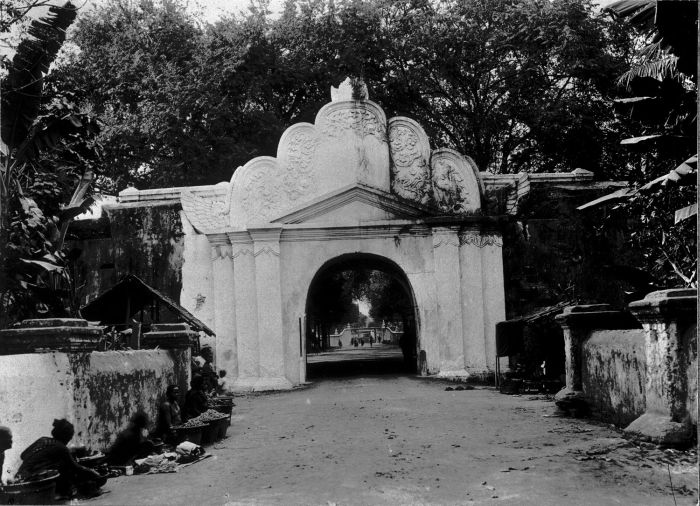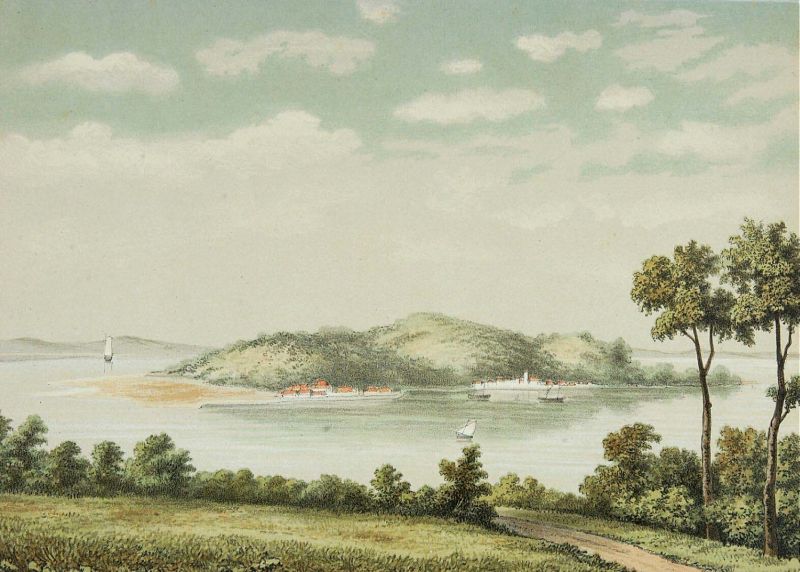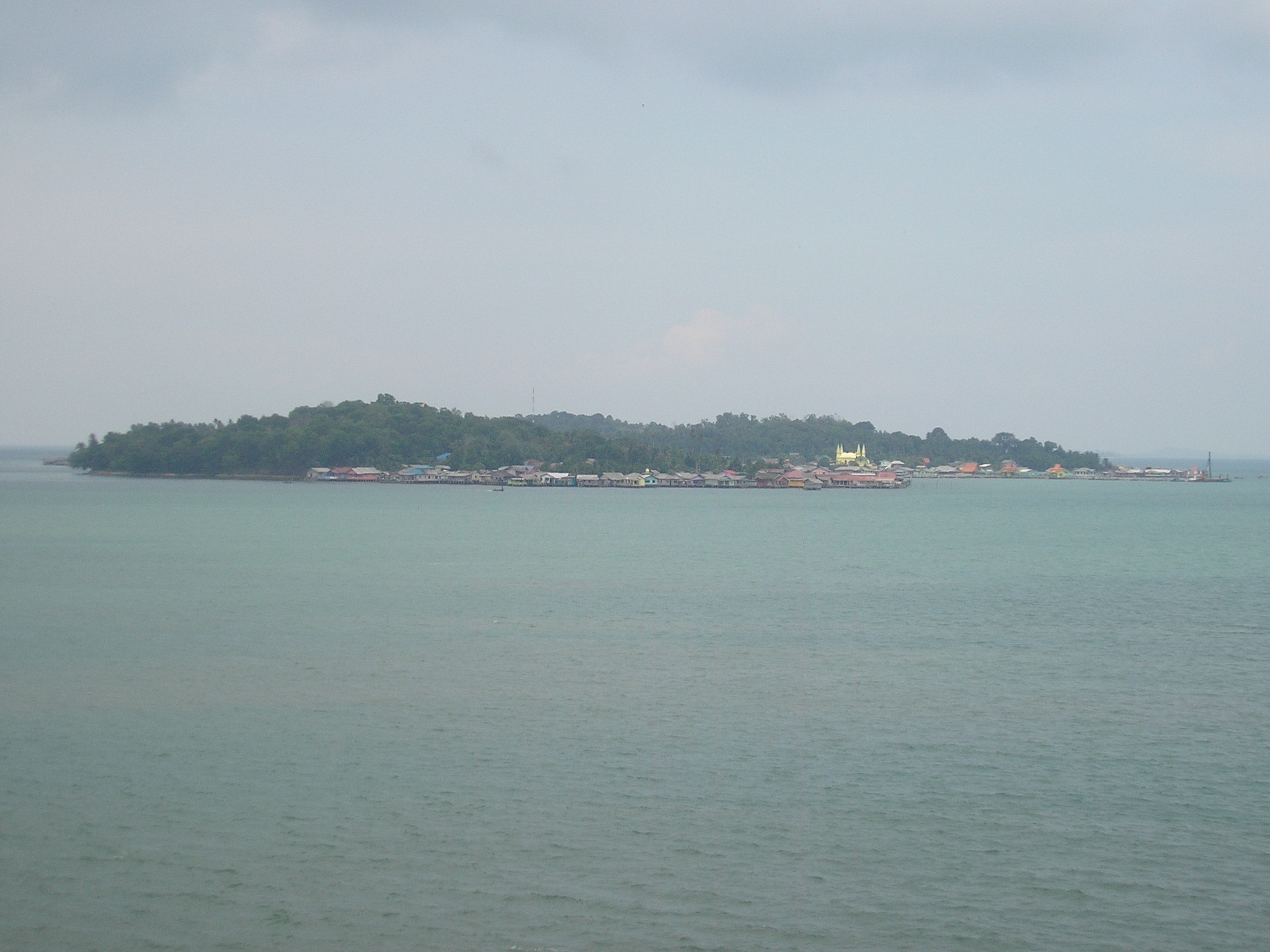|
Temenggong Abdul Rahman
Dato Temenggong Daeng Abdul Rahman bin Tun Daeng Abdul Hamid (1755 – 8 December 1825) was the Temenggong of Johor during the Bendahara dynasty. He was best known of being instrumental in the Treaty of Singapore with the British East India Company in 1819. History He was born in the Johor Sultanate in 1755 to Tun Abdul Hamid. In 1802, his father was installed as the Temenggong by Sultan Mahmud Ri’ayat Shah after the death of his grandfather Temenggong Abdul Jamal. However only a year later in 1803, his father died and the Sultan installed his uncle Engku Muda Muhammad as the Temenggong. Engku Muda Muhammad himself rejected the position and wanted the position of Yang Dipertuan Muda instead, but the Sultan would not approve. In 1806, Abdul Rahman was installed as Temenggong of Johor after his uncle's death by the Sultan at Lingga. Temenggong Abdul Rahman and his family and followers later moved to Singapura in 1811 to establish a governance there. By the time Sir Stamfo ... [...More Info...] [...Related Items...] OR: [Wikipedia] [Google] [Baidu] |
Temenggong Of Johor
The Temenggong of Johor is one of the members of the Orang Kaya Council first established by Sultan Abdul Jalil Shah himself. The first Temenggong being appointed in 1757 was Temenggong Abdul Jamal. The Temenggong of Johor was given the task of controlling the security of the Sultan and safeguarding the State and exercising control over all the territories of the Johor Empire. Temenggong of Johor was granted territorial control by the Sultan of Johor and Singapura (later Singapore) as the representative of the Sultan of Johor-Riau, just as the Grand Vizier was given Pahang as the territorial control, while the Temenggong of Muar was given Muar respectively. The descendants of Temenggong would later found the new Sultanate on the mainland of Johor with the first Temenggong Temenggong or Tumenggung ( Jawi: تمڠݢوڠ; ''Temenggung'', Hanacaraka: ꦠꦸꦩꦼꦁꦒꦸꦁ; ''Tumenggung'') is an old Malay and Javanese title of nobility, usually given to the chief of pub ... [...More Info...] [...Related Items...] OR: [Wikipedia] [Google] [Baidu] |
Singapura
Singapore (), officially the Republic of Singapore, is a sovereign island country and city-state in maritime Southeast Asia. It lies about one degree of latitude () north of the equator, off the southern tip of the Malay Peninsula, bordering the Strait of Malacca to the west, the Singapore Strait to the south, the South China Sea to the east, and the Straits of Johor to the north. The country's territory is composed of one main island, 63 satellite islands and islets, and one outlying islet; the combined area of these has increased by 25% since the country's independence as a result of extensive land reclamation projects. It has the third highest population density in the world. With a multicultural population and recognising the need to respect cultural identities of the major ethnic groups within the nation, Singapore has four official languages: English, Malay, Mandarin, and Tamil. English is the lingua franca and numerous public services are available only in English. ... [...More Info...] [...Related Items...] OR: [Wikipedia] [Google] [Baidu] |
British Government
ga, Rialtas a Shoilse gd, Riaghaltas a Mhòrachd , image = HM Government logo.svg , image_size = 220px , image2 = Royal Coat of Arms of the United Kingdom (HM Government).svg , image_size2 = 180px , caption = Royal Arms , date_established = , state = United Kingdom , address = 10 Downing Street, London , leader_title = Prime Minister (Rishi Sunak) , appointed = Monarch of the United Kingdom (Charles III) , budget = 882 billion , main_organ = Cabinet of the United Kingdom , ministries = 23 ministerial departments, 20 non-ministerial departments , responsible = Parliament of the United Kingdom , url = The Government of the United Kingdom (commonly referred to as British Government or UK Government), officially His Majesty's Government (abbreviated to HM Government), is the central executive authority of the United Kingdom of Great Britain and Northern Ireland. [...More Info...] [...Related Items...] OR: [Wikipedia] [Google] [Baidu] |
John Crawfurd
John Crawfurd (13 August 1783 – 11 May 1868) was a Scottish physician, colonial administrator, diplomat, and author who served as the second and last Resident of Singapore. Early life He was born on Islay, in Argyll, Scotland, the son of Samuel Crawfurd, a physician, and Margaret Campbell; and was educated at the school in Bowmore. He followed his father's footsteps in the study of medicine and completed his medical course at the University of Edinburgh in 1803, at the age of 20. Crawfurd joined the East India Company, as a Company surgeon, and was posted to India's Northwestern Provinces (now Uttar Pradesh), working in the area around Delhi and Agra from 1803–1808. He saw service in the campaigns of Baron Lake. In the East Indies Crawfurd was sent in 1808 to Penang, where he applied himself to the study of the Malay language and culture. In Penang, he met Stamford Raffles for the first time. In 1811, Crawfurd accompanied Raffles on Lord Minto's Java Invasion, which o ... [...More Info...] [...Related Items...] OR: [Wikipedia] [Google] [Baidu] |
Resident Of Singapore
The Governors of Singapore were the political leaders of Singapore during its pre-independence phase in the history of Singapore. Residents of Singapore (1819–1826) The Resident of Singapore ruled the British colony that is today the Republic of Singapore. The persons on this position governed Singapore from 1819 to 1826, on behalf of the British East India Company. Governors of the Straits Settlements (1826–1942) The Governor of the Straits Settlements ruled the Straits Settlements. The persons on this position governed the Straits Settlements from 1826 to 1946, on behalf of the British East India Company (1826–1858), the India Office (1858–1867) and the Colonial Office (1867–1946) respectively. Japanese Occupation (1942 to 1945) During the Japanese occupation of Singapore, there were two Mayors and five Military Administrators appointed to Syonan-to. Governors of the Straits Settlements (1945–1946) Governors of Singapore (1946–1959) The Go ... [...More Info...] [...Related Items...] OR: [Wikipedia] [Google] [Baidu] |
1824 Treaty Of Friendship And Alliance
The establishment of a British trading post in Singapore in 1819 by Sir Stamford Raffles led to its founding as a British colony in 1824. This event has generally been understood to mark the founding of colonial Singapore, a break from its status as a port in ancient times during the Srivijaya and Majapahit eras, and later, as part of the Sultanate of Malacca and the Johor Sultanate. Pre-colonial Singapore A significant port and settlement, known as Temasek, later renamed Singapura, existed on the island of Singapore in the 14th century. Vietnamese records indicate possible diplomatic relationship between Temasek and Vietnam in the 13th century, and Chinese documents describe settlements there in the 14th century. It was likely a vassal state of both the Majapahit Empire and the Siamese at different times in the 14th century. Around the end of the 14th century, its ruler Parameswara was attacked by either the Majapahit or the Siamese, forcing him to move on to Melaka where he ... [...More Info...] [...Related Items...] OR: [Wikipedia] [Google] [Baidu] |
Spanish Dollar
The Spanish dollar, also known as the piece of eight ( es, Real de a ocho, , , or ), is a silver coin of approximately diameter worth eight Spanish reales. It was minted in the Spanish Empire following a monetary reform in 1497 with content 25.563 g = 0.822 oz t fine silver. It was widely used as the first world currency, international currency because of its uniformity in standard and milling characteristics. Some countries countermarked the Spanish dollar so it could be used as their local currency. Because the Spanish dollar was widely used in Europe, the Americas, and the Far East, it became the first world currency by the late 18th century. The Spanish dollar was the coin upon which the original United States dollar was based (at 0.7735 oz t = 24.0566 g), and it remained legal tender in the United States until the Coinage Act of 1857. Many other currencies around the world, such as the Japanese yen and the Yuan (currency), Chinese yuan, were initially based on the Span ... [...More Info...] [...Related Items...] OR: [Wikipedia] [Google] [Baidu] |
William Farquhar
William Farquhar ( ; 26 February 1774 – 11 May 1839) was a Scottish colonial administrator employed by the East India Company, who served as the sixth Resident of Malacca between 1813 and 1818, and the first Resident of Singapore between 1819 and 1823. History Early life Farquhar was born in Newhall, Aberdeenshire, near Aberdeen in 1774 as the youngest child of Robert Farquhar and Agnes Morrison, his father's second wife. His brother, Arthur, two years his senior, rose to the rank of rear admiral in the Royal Navy, and received a knighthood for his distinguished services during the Napoleonic Wars. Shortly after arriving in Madras on 19 June 1791, Farquhar joined the East India Company as a cadet at the age of 17. He was promoted to a low-rank commissioned officer of the Madras Engineer Group on 22 June 1791. Two years later, on 16 August 1793, he became a lieutenant in the Madras Engineer Group. Malacca Between 1795 and 1818, Farquhar was the chief administrator of Bri ... [...More Info...] [...Related Items...] OR: [Wikipedia] [Google] [Baidu] |
Sultan Of Johor
The Sultan of Johor is a hereditary seat and the sovereign ruler of the Malaysian state of Johor. In the past, the sultan held absolute power over the state and was advised by a ''bendahara''. Currently, the role of ''bendahara'' has been taken over by first minister (Malay: ''Menteri Besar'') with the constitutional monarchy system via Johor State Constitution. The Sultan is the constitutional head of state of Johor. The Sultan has his own independent military force, the Royal Johor Military Force (Malay: ''Askar Timbalan Setia Negeri Johor''). The Sultan is also the Head of Islam in Johor state. History The first sultan of Johor was Alauddin Riayat Shah II. He was the son of the last sultan of Malacca, Sultan Mahmud Shah. The descendants of the Sultanate of Malacca in Johor ended with the death of Sultan Mahmud Shah II in 1699 and throne was taken over by Sultan Abdul Jalil IV, marking the rule of the House of Bendahara. Abdul Jalil IV was a ''bendahara'' before the de ... [...More Info...] [...Related Items...] OR: [Wikipedia] [Google] [Baidu] |
Riau Islands
The Riau Islands ( id, Kepulauan Riau) is a province of Indonesia. It comprises a total of 1,796 islands scattered between Sumatra, Malay Peninsula, and Borneo including the Riau Archipelago. Situated on one of the world's busiest shipping lanes along the Malacca Strait and the South China Sea, the province shares water borders with neighboring countries such as Singapore, Malaysia, and Brunei. The Riau Islands also has a relatively large potential of mineral resources, energy, as well as marine resources. The capital of the province is Tanjung Pinang and the largest city is Batam. The Riau archipelago was once part of the Johor Sultanate, which was later partitioned between the Dutch East Indies and British Malaya after the Anglo-Dutch Treaty of 1824, in which the archipelago fell under Dutch influence. A Dutch protectorate, the Riau-Lingga Sultanate, was established in the region between 1824 and 1911 before being directly ruled by the Dutch East Indies. The archipelago be ... [...More Info...] [...Related Items...] OR: [Wikipedia] [Google] [Baidu] |
Penyengat Island
Penyengat Island ( id, Pulau Penyengat, wasp island) is an island in Tanjung Pinang, capital of the Riau Islands, Indonesia. It lies just off Bintan Island, close to the downtown of Tanjung Pinang. The island has historical significance, dating back to the 18th Century, when it was established as a fort as part of the Sultanate of Johor-Riau by the Bugis people. The island contains the tomb of Raja Ali Haji Raja Ali Haji bin Raja Haji Ahmad (1808–1873) was a 19th-century Bugis-Malay historian, poet and scholar. He was elevated to the status of National Hero of Indonesia in 2004. Haji has been described as one of the most important Malay write ..., a 19th-century Bugis historian and scholar. It is a small island that is approximately 6 km from the downtown of Tanjung Pinang, Riau Islands province. This island measures approximately 2500 meters x 750 meters, and is approximately 35 km from the island of Batam. This island can be reached by using a boat or better known by pom ... [...More Info...] [...Related Items...] OR: [Wikipedia] [Google] [Baidu] |




.jpg)

